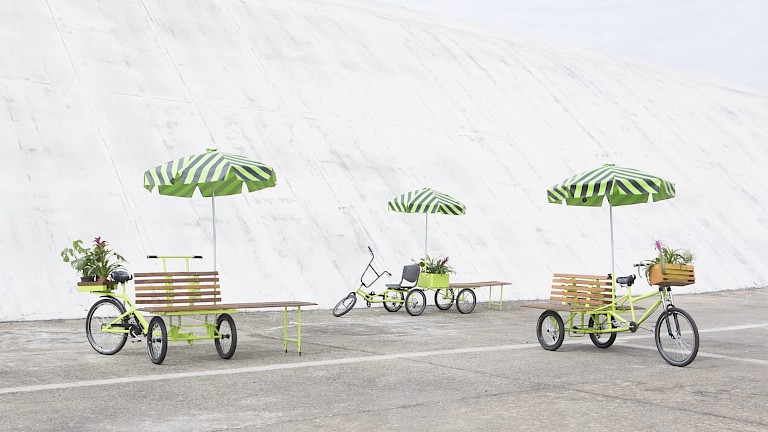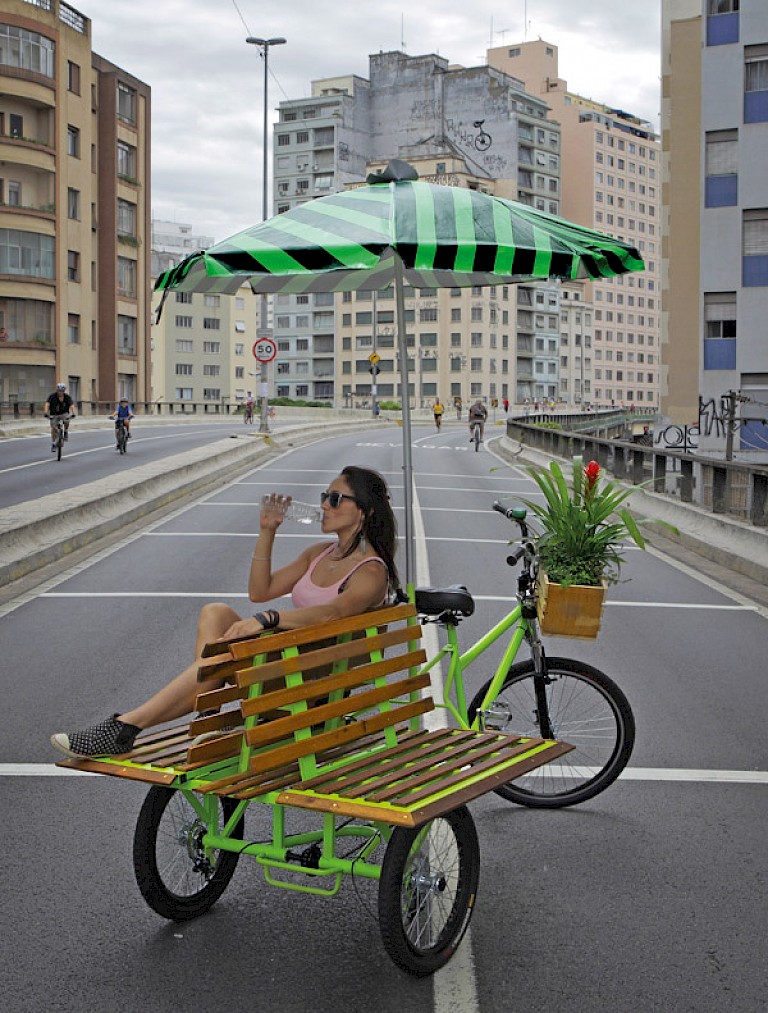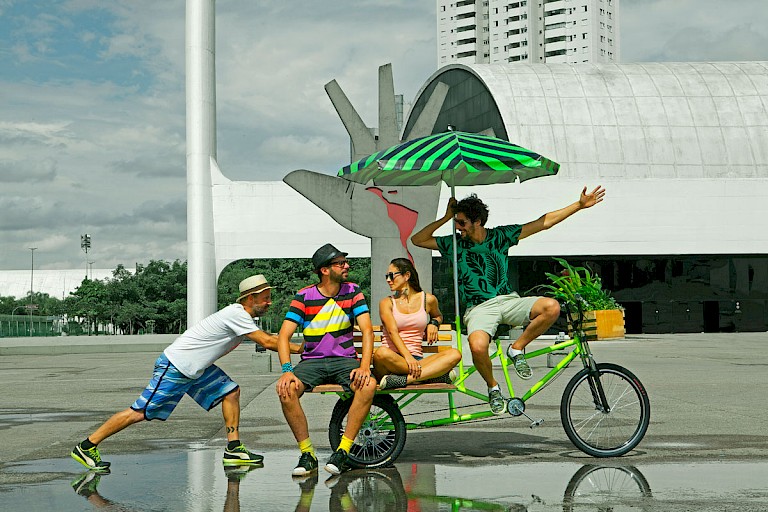



Thinking about this scenario presented, the collective BijaRi, formed by Rodrigo Araujo, Geandre Tomazoni, Gustavo Godoy, Maurício Brandão and Olavo Ekman, including architects and artists always on the radar to different media platforms, were concerned to develop something to try to meet this demand to create an alternative temporarily converting empty square in São Paulo, developing mobile installations using umbrella, retractable benches, planters, and an adapted bicycle makes mobility possible, concluding with a kind of micro public square. Having the flexibility to articulate, come together and create larger living spaces, providing a series of pattern designs in lenticular panels that change according to the angle at which you view. To this work it was given the name (Im) Possible Squares (Praças {im} possíveis), creating an allusion on squares that could exist but are unoccupied points, which is the collective for a moment to have this function.
Actions that arise from sensitivity to observe the contemporary needs, has the power to quickly infect any person who made the artistic intentions usual as parts just by being linked to the common desire. The collective was pretentious in the ways art can be configured as a transforming element of public space, driving look to cracks through which they can build a new city. With its bike-squares they act as agents of an alternative group moved by art that wants to see São Paulo full of green and cultural events.
The production featured a vernissage in São Paulo gallery Choque Cultural, where an intervention on the facade of the gallery and a facility in the street outside the building was made. It was also a time to experience the collective work as a new collecting model. Starting from the concept that permeates society in a while. Actions such as urban events and interventions that seek to transform public space proposing situations that make it more welcoming. The Bijari taking your main concept the community, seeks to bring this trend to collecting art, whose every exposed piece in the gallery and outstanding in the street, part of a whole and has its meaning completed in the presence of others, causing each collector is part of a larger movement in favor of public space.
The collective developed many relevant jobs to think about public space and contemporary ways of life. However, this work proves more relevant because it is linked to a structural problem that São Paulo is facing, but not with a critique that only points to the cause, but showing a possible solution that could be applied in various situation, being a flexible work and simple realization. And not only in São Paulo, but this project could be brought to many places with no squares and public places to rest.
The idea is that the square was modular and at the same time traveling, so it could be flexible depending on the occupation of space needs. A good idea that spoke with environmental issues, has been to bring mobility to the structure using a bicycle, which besides not being pollutant, has proved increasingly as one of the most rewarding ways to get around São Paulo, whose urban streets are dense, chaotic and intense traffic. At last they came to a piece that besides being itinerant, becomes in all its aspects a piece of collective use, either to ride, rest, become a more beautiful space and socialize.
All copyright belongs to Shanghai Academy of Fine Arts, Shanghai University.



